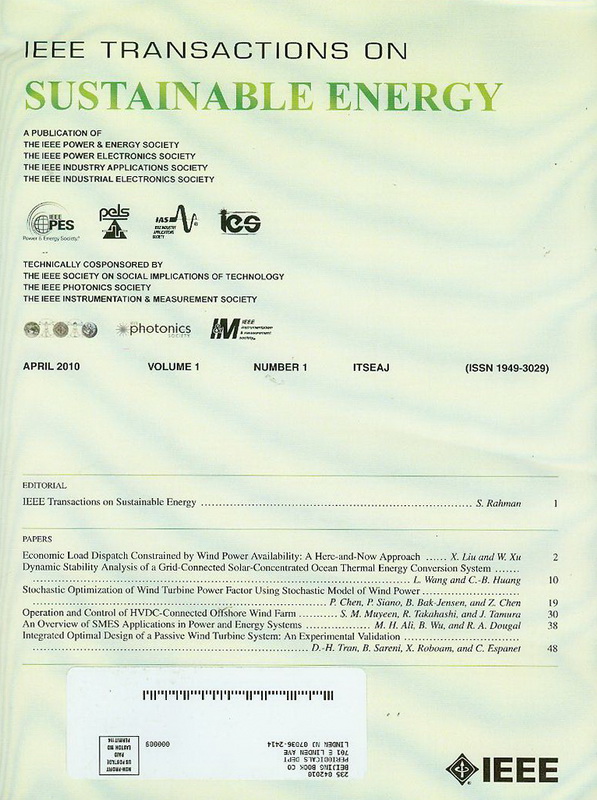利用风力涡轮机的能量储备和虚拟惯性进行频率受限调度
IF 8.6
1区 工程技术
Q1 ENERGY & FUELS
引用次数: 0
摘要
本文章由计算机程序翻译,如有差异,请以英文原文为准。
Frequency Constrained Dispatch With Energy Reserve and Virtual Inertia From Wind Turbines
With the increasing penetration of wind power and gradual retirement of conventional generating units (CGUs), wind turbines (WTs) become promising resources to provide steady-state energy reserve (ER) and frequency support for the grid to facilitate supply-demand balance and frequency security. In this regard, a novel frequency constrained dispatch framework with ER and virtual inertia from WTs is proposed. Firstly, this paper establishes the WT model with both ER and virtual inertia, whose energy sources are WT's deloading and rotor kinetic energy, respectively. Secondly, the system frequency response and CGUs' power response are derived while considering WTs exiting inertia response at frequency nadir. Then, this paper develops a stochastic-optimization-based frequency constrained dispatch model, where both WTs' frequency regulation parameters and rotor speeds are decision variables, so that the coupling between WT's mechanical and electrical parts and the coupling between system's transient dynamics and steady-state operation can be fully reflected. Finally, convex hull relaxation, convex hull approximation and deep neural networks are used to transform the original nonlinear model into a mixed-integer second-order cone programming model. Case studies on the 118-bus system verify the effectiveness of the proposed models and methods.
求助全文
通过发布文献求助,成功后即可免费获取论文全文。
去求助
来源期刊

IEEE Transactions on Sustainable Energy
ENERGY & FUELS-ENGINEERING, ELECTRICAL & ELECTRONIC
CiteScore
21.40
自引率
5.70%
发文量
215
审稿时长
5 months
期刊介绍:
The IEEE Transactions on Sustainable Energy serves as a pivotal platform for sharing groundbreaking research findings on sustainable energy systems, with a focus on their seamless integration into power transmission and/or distribution grids. The journal showcases original research spanning the design, implementation, grid-integration, and control of sustainable energy technologies and systems. Additionally, the Transactions warmly welcomes manuscripts addressing the design, implementation, and evaluation of power systems influenced by sustainable energy systems and devices.
 求助内容:
求助内容: 应助结果提醒方式:
应助结果提醒方式:


